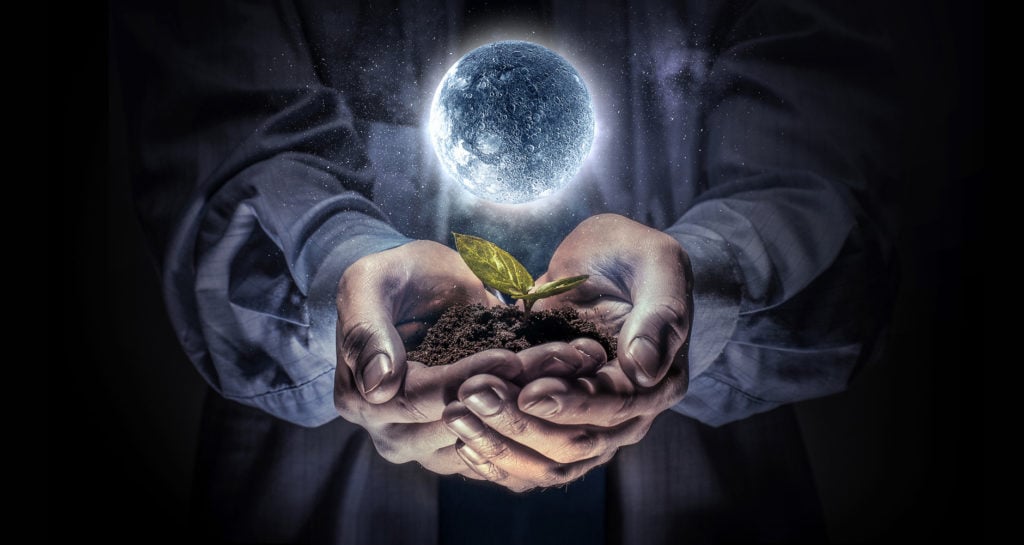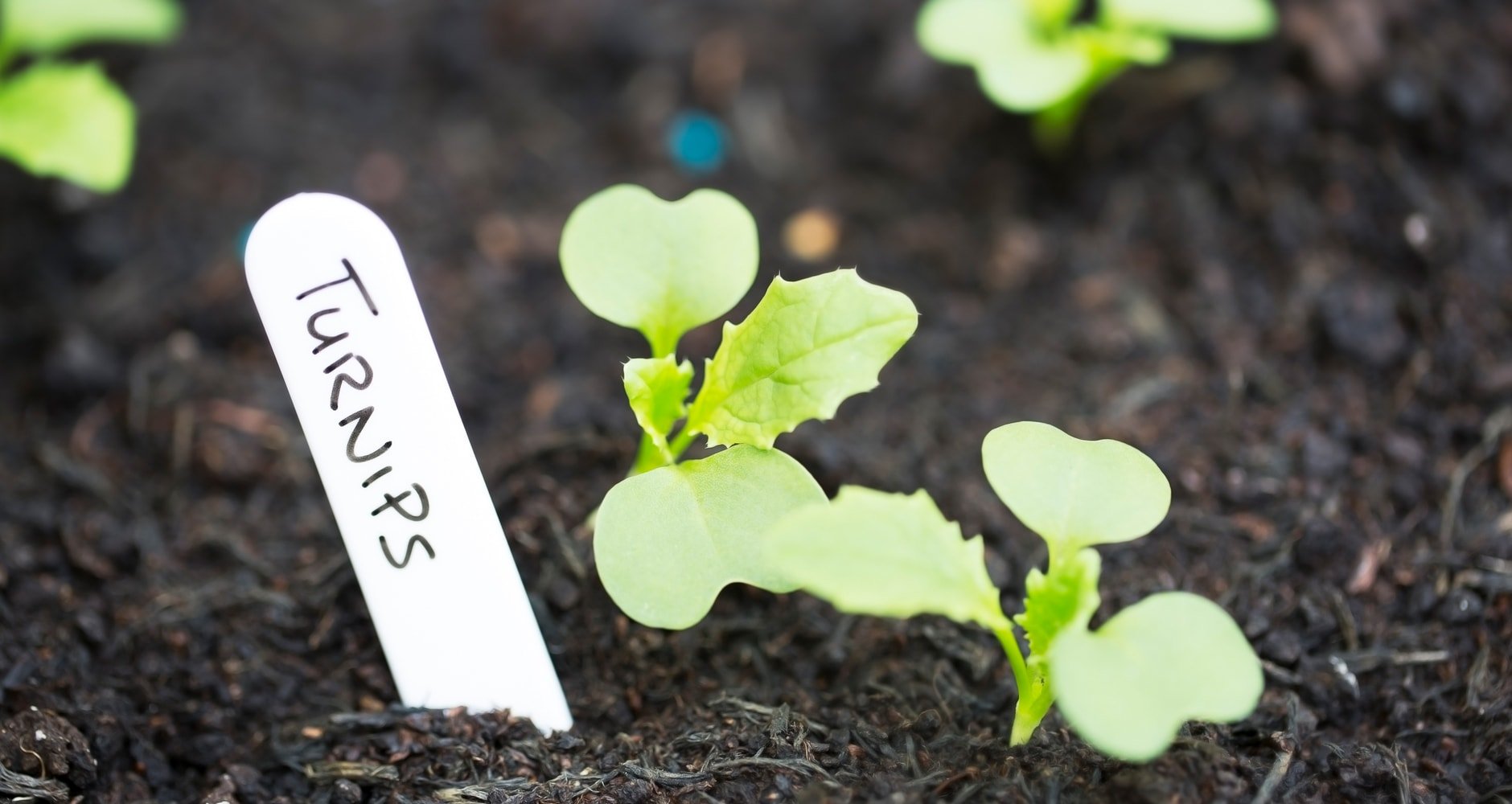Why Go to the Moon Again
Gardening by the Moon, or more specifically, according to the phases of the Moon, is an idea that has been around for as long as humans have been growing their own food. It's becoming more and more in vogue, cropping up (no pun intended) in books, blogs, and other educational materials coming out of the permaculture movement, "a philosophy of working with, rather than against nature."
The Gardening By The Moon Philosophy

Here at the Farmers' Almanac, though, gardening by the Moon has always been our philosophy, and our editions include a calendar of the best days for sowing, planting, weeding, and other garden chores, as determined by the phase and position of the Moon. Our readers have long sworn by this method of managing their gardens and crops.
But how could a chunk of rock more than 200,000 miles away affect how plants on Earth grow?
Those who swear by this ancient growing method say the water in both the ground and in plants are affected by the gravitational pull of the Sun and Moon, just like ocean tides are. Just as the tides are highest during the new and full phases of the Moon, this theory holds, seeds, too, will absorb the most water during these times.
How Moon Phases Affect Plant Growth
Though the practice is as old as agriculture itself, planting by the Moon is a complex art. Here's a look at how Moon phases are believed to affect plant growth:
Over the course of a 29½ –day lunar cycle, the Moon goes through four basic phases, new, full, and two quarter phases—first and last. For half of its cycle, between the new and full phases, the Moon is waxing (growing in illumination). Then, after the full Moon, it begins to wane (decreasing in illumination).
Check out our Moon Phase calendar.
Aboveground Crops
All aboveground crops should be planted when the Moon is waxing. During the new Moon is the best time to sow or transplant leafy annuals such as lettuce, spinach, cabbage, and celery, while the first quarter phase is good for fruits and foods with external seeds.
Below-Ground (Root) Crops
Root crops do best when the Moon is waning. When the Moon is just past full, it's a good time to plant root crops like potatoes, beets, and turnips, and fruit trees. During the last quarter phase, it's best to avoid planting at all. Work instead on improving soil, weeding, mulching, composting, etc.

But knowing the phase of the Moon isn't enough. Planting by the Moon also requires knowledge of the Moon's place in the zodiac, based on ancient lore that each sign confers certain growing conditions.
For instance, water and earth signs—Cancer, Scorpio, Pisces, Taurus, and Capricorn—are said to bring moist, fertile conditions, whereas most air and fire signs—Gemini, Aquarius, Aries, Leo, and Sagittarius—are said to be barren. There are some exceptions to that rule, though. The earth sign Virgo is barren, and the air sign Libra is said to be a relatively fertile sign.
Some signs are also believed to benefit specific types of plants. For example, Taurus is said to favor leafy greens, while corn does best under the influence of Libra.
Consult Our Daily Planners Online
Can't keep track of all these variables? Not to worry. The Farmers' Almanac has got you covered! Just consult these handy guides before you take your trowel to the soil.
Visit our online planners:
- Gardening by the Moon Calendar
- Best Days To Harvest Calendar

Jaime McLeod
Jaime McLeod is a longtime journalist who has written for a wide variety of newspapers, magazines, and websites, including MTV.com. She enjoys the outdoors, growing and eating organic food, and is interested in all aspects of natural wellness.
Source: https://www.farmersalmanac.com/why-garden-by-the-moon-20824
0 Response to "Why Go to the Moon Again"
Post a Comment